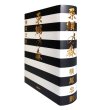原郷の森 [YB115]
販売価格: 4,180円(税込)
重さ: 732g
商品詳細
- 【商品ID】
- YB115
- 【商品名】
- 原郷の森
- 【発行】
- 横尾忠則
- 【発刊】
- 文藝春秋(2022.3.24)
- 【体裁】
- 四六判ハードカバー 520頁
(内容紹介)
〜以下、日経新聞オンラインサイトより抜粋〜 ダビンチ、ピカソ、デュシャンに北斎…古今東西の芸術家たちが入れ代わりやって来ては、芸術論に花を咲かせる不思議な森-。新刊『原郷の森』(文芸春秋)について、著者で美術家の横尾忠則さん(85)は「絵のような小説を書きたかった」と話す。虚と実、此岸(しがん)と彼岸、自己と他者など、さまざまな境界を超える異色の芸術小説について聞いた。 「美術家は、言葉を超えた概念を表現する。文学者には書けない、絵のような小説を書きたいと思った。絵画-特に僕の絵はフィクションとノンフィクションが合体したもので、それを言葉にできないかと」 主人公Yは横尾さん自身。東京・成城のアトリエは実際、森の端にあり、そこから想像の「原郷の森」へとワープする。暗闇の森や絵画の中の森、かつて訪れた外国の地、はたまた宇宙空間などと、シチュエーションはさまざま。そこでは時間は存在せず、Yは生前親交のあった作家の三島由紀夫に導かれ、歴史上の多彩な人物を紹介される。画家、作家だけでなく映画監督や科学者から、ブッダやキリスト、孔子、空海ら宗教者・哲学者まで。Y以外の全員が「死者」。原郷とは、現世での生を終えた後に還(かえ)っていく、すべての人間の魂の故郷らしい。 ■ ■ 「ピカソやデュシャンら僕が尊敬する芸術家を中心に、世界中の先人に『ヨコオ論』を語らせたら面白いんじゃないかと思ったんです」。確かに本作の核は「死者が語るヨコオ論」だ。Yの芸術の神髄にあるもの、制作態度や進むべき道など、先人たちはあれこれとYにアドバイスする。
【Product ID】 YB115
【Product name】 Harago Forest
【Published by】 Tadanori Yokoo
【Published by】 Bungeishunju (March 24, 2022)
【Style】 Hardcover, 520 pages
(Contents)
〜The following is an excerpt from the Nikkei Shimbun Online website
Da Vinci, Picasso, Duchamp, Hokusai... Artists from the East and West come and go, and artistic discussions blossom in this mysterious forest. I wanted to write a novel like a painting," said Tadanori Yokoo, 85, an artist and author of the new book "The Forest of Harago" (Bungeishunju). We asked him about his unique art novel that transcends various boundaries, such as the imaginary and the real, this shore and the other shore, and the self and the other.
An artist expresses concepts that transcend language. I wanted to write a novel like a painting, which literary artists cannot write. Paintings-especially my paintings-are a merging of fiction and nonfiction, and I wondered if I could put that into words."
The main character Y is Yokoo herself. His studio in Seijo, Tokyo, is actually located at the edge of a forest, from which we warp to an imaginary "Harago Forest. The situations vary from a dark forest, to a forest in a painting, to a foreign land he once visited, to outer space, and so on. Time does not exist there, and Y is guided by Yukio Mishima, a writer who was a close friend of his during his lifetime, and is introduced to a wide variety of historical figures. Not only painters and writers, but also film directors, scientists, and religious figures and philosophers such as Buddha, Christ, Confucius, and Kukai, all of whom, except Y, are "dead. It seems that Hara-go is the home of the souls of all human beings who return to this world after completing their lives in this world.
The "dead" are all dead.
I thought it would be interesting to have the world's forefathers, especially artists I admire such as Picasso and Duchamp, talk about the "Yokowo Theory,"" he said. Indeed, the core of this work is "Yokowo Theory as told by the dead," in which Y's predecessors give him advice on what lies at the heart of his art, his attitude toward his work, and the path he should take.




